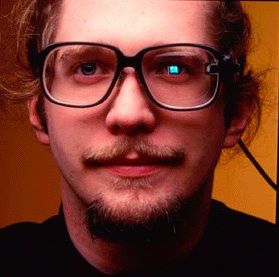Difference between revisions of "Thad Starner"
Caseorganic (Talk | contribs) |
Caseorganic (Talk | contribs) |
||
| Line 10: | Line 10: | ||
[[Category:Wearable Computing]] | [[Category:Wearable Computing]] | ||
[[Category:Ubiquitous Computing]] | [[Category:Ubiquitous Computing]] | ||
| − | |||
| − | |||
| − | |||
| − | |||
| − | |||
| − | |||
Revision as of 04:41, 16 May 2011
Thad Starner is founder and director of the Contextual Computing Group at Georgia Institute of Technology's College of Computing. Before joining the Georgia Tech faculty in 1999, Starner gained international recognition as a leader in the field of wearable computing for his doctoral work involving ``Wearable Computing and Contextual Awareness at the MIT Media Laboratory. An advocate of continuous-access, everyday-use systems, Thad has worn his custom wearable computer in such a manner since 1993, arguably the longest such experience. Thad is a co-founder of the IEEE International Symposium on Wearable Computers (ISWC) and co-founder and first member of the MIT Wearable Computing Project. Starner has consulted for Fortune 500 companies, has authored over 50 peer-reviewed scientific papers and book chapters, and is always looking for a good game of table tennis.
Starner is probably most well known for being a strong advocate for wearable computing. During his time at the MIT Media Lab, Starner, already responsible for helping creating one of the earliest high-accuracy on-line cursive handwriting recognition systems in 1993 as an Associate Scientist with BBN's Speech Systems Group, became one of the world's leading experts on the subject. Starner is also a co-founder of the IEEE International Symposium on Wearable Computers (ISWC) and co-founder and first member of the MIT Wearable Computing Project, where he was one of the first 6 cyborgs involved. Since 1993, Starner has been wearing his own customized wearable computer system full time, arguably one of the longest, if not the longest, such instance. He designed the hardware for his system, dubbed "The Lizzy", based on designs of the wearable "hip PC" designed by Doug Platt, who built Starner's original wearable. The original system consisted of custom parts from a kit made by Park Enterprises, a Private Eye display, and a Twiddler chorded keyboard. As of January 29, 2008, Starner's setup has evolved to include a heads-up display showing 640x480 screen resolution, a Twiddler, and an OQO Model 1 Ultra-Mobile PC (though the specifications listed suggest an OQO Model 01+) with a GHz processor, 512 MB of RAM, 30GB hard disk, USB2, Firewire, and Wi-Fi built in, as well as a mobile phone with cellular Internet access as well.
Some of the benefits he receives from wearing a computer include being able to type and access the Internet while walking around or talking to others allowing him to take notes on a conversation in real-time, opening up notes on a certain subject and e-mailing them at any time or even having two conversations at once, one online and one face to face, and if he comes across something he doesn't know or recognize, he can instantly find out. In addition to augmenting the outside world, having a computer on at all times improves Starner's nerves while giving talks; Starner claims to have a speech impediment but is able to speak more clearly when prompted by a computer.
